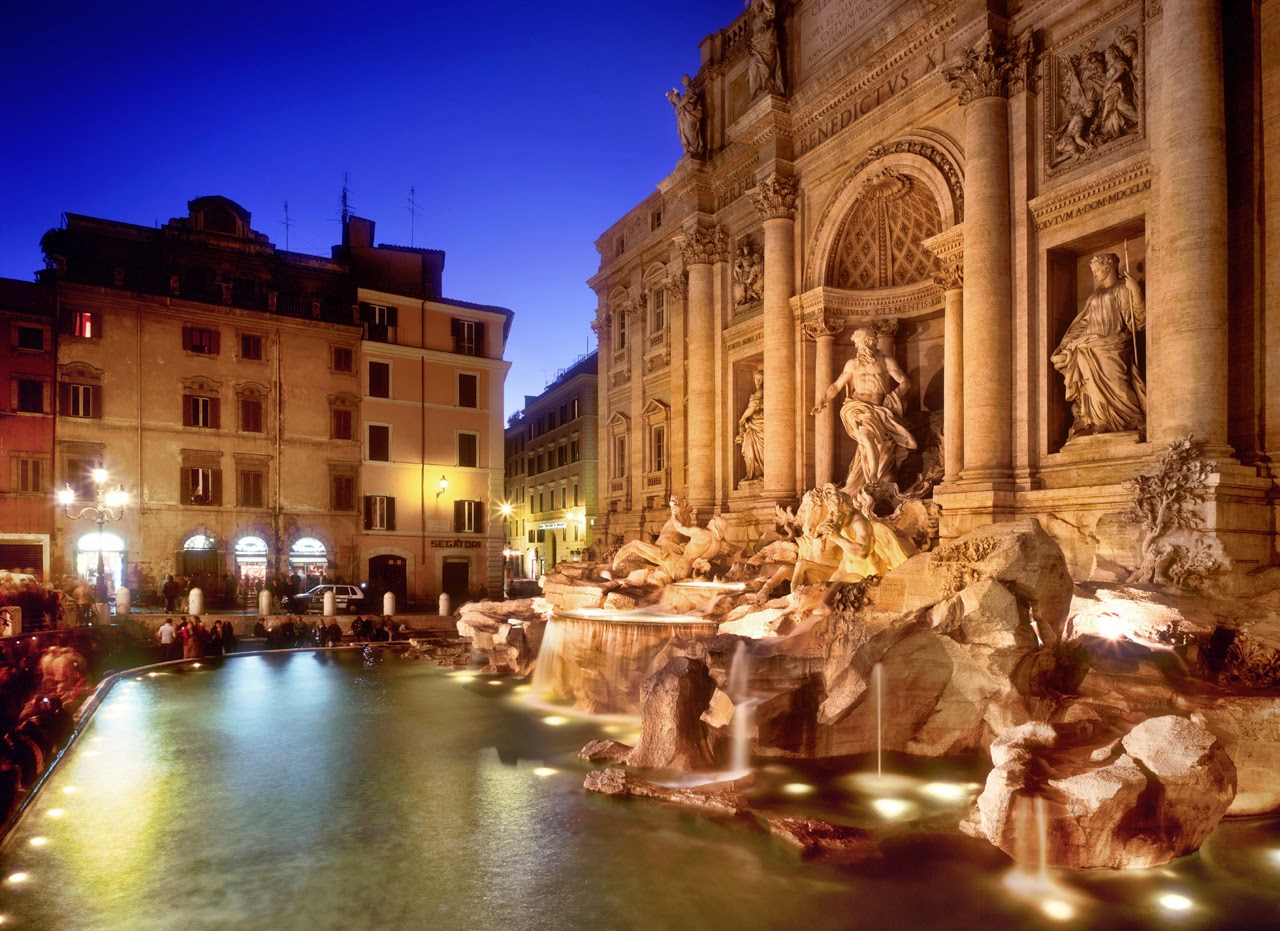# In the century,
Villa Borgheses’s once formal gardens were fully landscaped in a more
naturalistic style, before being
bought by the Roman authorities and given to the public in 1903
LAZILY STRETCHING OUT
across the northern perimeter of the city walls, the Villa Borghese looks down
upon the Piazza del Popolo and the trio of busy through fares that flow into
the centre of town. Once the lavish gardens of the 17th-century
cardinal who bequeathed the park its name, Villa Borghese has long been Rome’s
favourite place to escape the heat of the streets. Long winding alleys wrap
themselves around copses of trees, under which sit relaxing Romans of every
stripe-lovesick couples, furiously
smoking old men with shirts open to their waist, groups of teenagers
licking gelato. This is where the city comes to keep fit too – joggers,
cyclists and strollers keep the avenue moving throughout the day.
But this Rome, and even in a place as laid back as this,
high culture can’t help making an appearance. Villa Borghese is home to some of
the city’s finest museums – the Museo e Galleria Borghese, housed in the
Borghese Villa itself, showcases one of the best collections of Renaissance and
Baroque art in the world. In particular, the marble sculptures by Bernini on
display are some of the very best.
Another treat is the once-scandalous sculpture of Cardinal
Borghese’s wife, Pauline, the sister of Napoleon. The statue of her carved by
Antonio Canova, in which she insisted on being depcted naked as a goddess of
love, caused the cardinal so much embarrassment that he not only refused to
allow it to be displayed in public, but would only show it to close
acquaintances by torchlight. As wit hmost cultural artifacts that are censored,
the statue – and its subject – gained legendary status amongst the Roman
public, much to the cardinal’s chagrin.
The sculptures extend out into the park surrounding the
villa too. Busts and statues from 1,000 years of the city’s great and good are
scattered throughout, the unlucky with their noses broken off and the
favourites covered in lipstick kisses. The grounds of Villa Borghese are also
where Rome turns its cultural attention to the wider world. Ever since the
German polymath Johann Wolfgang Goethe took a holiday here-a visit that the
German government commissioning a statue of the great man to stand forever in
the park – foreign governments have been rushing to donate statues of their own
literary and artistic geniuses. So, in a 10-minute stroll, you’ll pass the
likes of Pushkin, Byron and Victor Hugo.
Just as the Roman Empire spread its influence across half
the planet, and the artists and architects of the Renaissance showed the world
what art could be, so at last, in some small way, the debt is being
acknowledged and the favour returned.
The Museo e Galleria Borghese is so popular that it’s
difficult to just turn up and get in – you’ll need to ring ahead and book a
ticket at least two hours in advance. (galleriaborghese.it).





